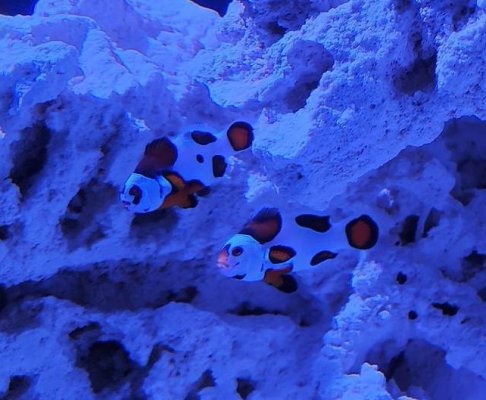Good Afternoon,
I have two orange storm Ocellaris clownfish and they seemed to be paired up one is much larger than the other (Which I thought was female 2 inches) and the other is (maybe male just 1.5 inches). I don't know the exact age of the fish however the guy at LFS said they were paired and they never left each others side the month he had them but now its just them in by 32gal Cube and they stray from each other and even sleep apart but are still next to each other Id say 60% of the time. So I'm not sure if they have spawned at least they haven't in my care. I have seen BOTH the larger and smaller one be submissive via the twitching but the larger is a bit more aggressive towards the smaller. The small one gobbles up the food where as the larger doesn't seem to care as much but still eats great. I don't care if they actually spawn I just wanted two of them in general.
Clownfish have strange behavior I just want some insight. I have read several articles but seems like they are paired but aren't at same time

I have two orange storm Ocellaris clownfish and they seemed to be paired up one is much larger than the other (Which I thought was female 2 inches) and the other is (maybe male just 1.5 inches). I don't know the exact age of the fish however the guy at LFS said they were paired and they never left each others side the month he had them but now its just them in by 32gal Cube and they stray from each other and even sleep apart but are still next to each other Id say 60% of the time. So I'm not sure if they have spawned at least they haven't in my care. I have seen BOTH the larger and smaller one be submissive via the twitching but the larger is a bit more aggressive towards the smaller. The small one gobbles up the food where as the larger doesn't seem to care as much but still eats great. I don't care if they actually spawn I just wanted two of them in general.
Clownfish have strange behavior I just want some insight. I have read several articles but seems like they are paired but aren't at same time

















